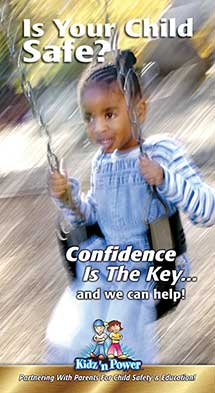
“Keeping Kids Safe: Who is a Stranger?”
Parents increase their ability to keep their children safe when they understand more about the real threats their children face. Predators, anyone who preys on our most precious and vulnerable children, are real threats to any child.
Understanding who these predators are and how to teach your kids the most basic skills to prevent being caught by them, is a great prevention safety technique. It's part of teaching your children how to keep themselves safe.
First, a predator is anyone that preys on innocent children. Bullies at school are kids that prey on other kids. Drug dealers are predators that approach kids with, “Want to make some money?” and hook kids on drugs. Gangs prey on kids with promises of status and self-esteem while engaging in anti-social and criminal behavior. Sexual predators seek out children they can sexually abuse.
Second, regardless of the type of abuse, predators are very difficult, even for us, child safety experts, “to prevent.” They are cunning, driven and devious individuals. They are also difficult for most of us to recognize.
Frankly, you really can't. If there is one message for you to understand, it is this one: predators look like everybody else.
They look like your neighbors.
They look like the people at the grocery store.
They look like everyday, normal individuals.
They look like you and me.
COMMUNICATION IS KEY
Talk to your children. Explain to them what a stranger is without getting them afraid or intimidated. Explain to them the importance of staying focused and confident even if they feel afraid.
We believe the best way to stop predators is to focus on the potential victims: kids. If we arm kids with skills to keep themselves safe they can prevent any predator from “catching” them.
A great first step is to teach your child to be safe from ANY stranger. Teach them, “A Stranger Is Simply Someone Your Don't Know Very Well.” Knowing someone very well means they've been in your home, you've shared a meal or two with them, you know their family, you know where they live and if they have a dog or pet.
You're neighbor you casually say “Hi!” to, is a stranger. The check out clerk at the store you had a happy chat with today is a stranger. The older teen at the playground approaching your child with, “Hey, Kid!” is a stranger. Even the school bus driver can be a stranger.
It is not about who is a good stranger or bad stranger. This is too confusing for kids to understand and think through, especially at younger ages. Keep it simple, such as, a stranger is simply, “Someone You Don't Know Very Well.”
Next, teach your child to keep a safe distance from a stranger. This is mostly one-on-one or in very small groups. Yes, your child's teacher at school can be a stranger to them but in the large groups there is more safety. It's the one-on-one child-to-stranger situation that you want to prevent.
Finally, if a stranger insists your child go with them, or your child finds themselves close to or one-on-one with a stranger, teach them to leave the situation IMMEDIATELY and find a trusted adult.
A Great Example...
A gentlemen took his family to a famous theme park this summer. While the family was buying a cool, afternoon drink, their 10 year old son was approached by a teen in the back of the line asking, “Hey, kid, would you like to make some money?” He responded with a firm and loud, “NO!” and immediately ran forwards to tell his Dad what happened. Of course, the teen disappeared, but this is exactly what should happen.
Knowing who a stranger is, is a very simple yet effective first step in child safety from all types of child predators. Being approached by a stranger can occur out in your yard or at school or the mall. And, a child's response should be the same whether its a good stranger asking for directions to the hospital or a predator looking to lure them into their car.
Dealing with threats from child predators is a very complex problem. But a series of steps and techniques that arm your child with an ability to stay one step in front of them will keep them safer today than yesterday. Understanding who a stranger is, is one of those simple first steps.
Safety from strangers is a topic that almost all children have heard about repeatedly. However, most children have also never had an opportunity to practice what to do when in a negative situation with a stranger. Practice the techniques your child should use through role-playing games.


